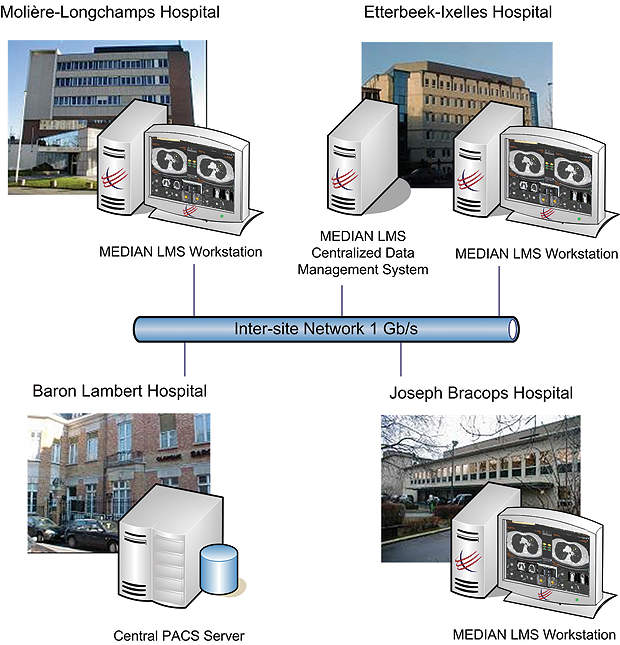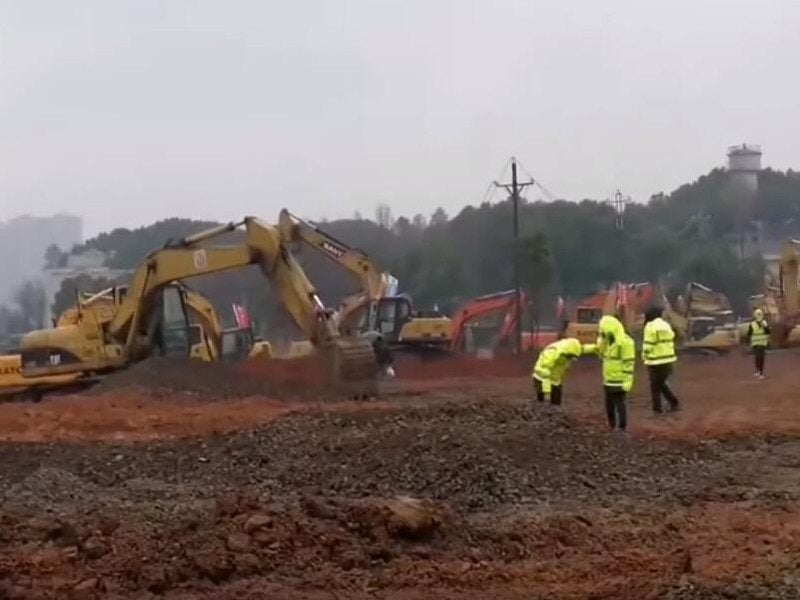Median Technologies’ Lesion Management Solutions system tracks lesions identified in CT scans, distributes a standardised oncologic report and centralises the lesion data, making it simpler for hospital staff to access information.
Cancer patient management today is a multi-disciplinary process and often involves several hospitals. It is quite common for the patients to have their cancer diagnosed and staged at one hospital and then visit another for a follow-up. The doctors, too, often work at several sites, while hospitals are becoming more and more organised into cancer care networks. These developments have created a need for good communication and data sharing not only within a hospital, but also across multiple sites.
Median Technologies has developed its Lesion Management Solutions (LMS) to objectively measure and track lesions identified in CT scans, distribute a standardised oncologic report and centralise the lesion data for easier follow-up. LMS contributes both to more accurate patient diagnosis with consistent evaluation of lesion size and growth, and enhanced communication among specialists during tumour boards and multidisciplinary staff meetings.
LMS modular architecture turns around a centralised data management system acting as a central repository to archive and distribute all the lesion information obtained using the LMS application. The application itself can be integrated with existing RIS/PACS workstations for an improved clinical workflow and report transmission. The radiologists read the images on their PACS workstation and launch the LMS application whenever needed directly from there. All the lesion information obtained using LMS is stored on the centralised data management system and can be automatically retrieved when doing a patient follow-up. The imaging report automatically generated by LMS is sent to the PACS server so the referring physicians can have access to it and the quantitative lesion information it contains.
Multi-site configuration
The centralised data management system can be common to several hospitals connected via a network. In such multi-site configuration, patients or radiologists can move from one hospital to another and the lesion information will always be accessible from any of the sites. This is what has been done at IRIS South Hospitals in Brussels, Belgium, where three hospitals separated by an average distance of three miles share a centralised data management system.
Professor Philippe Peetrons is head of the Medical Imaging Department at IRIS South Hospitals where they use the LMS application for all patients referred for cancer staging or for at-risk patients referred for lung nodule diagnosis. He explains that such multi-site integration is very beneficial for the patients who must sometimes be treated in a different hospital than the one where the initial diagnostic was made: “All hospitals of the group have a radiology department, but only one has a medical oncology department. About 25% of cancer patients must move to this hospital to be treated and thanks to Median LMS centralised data management system, all the lesion information obtained during the initial evaluation and staging is available for follow-up.”
Radiologists also benefit. Firstly, the clinical application itself provides them with computer-aided detection (CAD) of lung nodules, repeatable and objective measurement of lesion size and automatic follow-up, while also generating a standardised report presenting all the quantitative data obtained for each lesion. “The application increases the diagnostic and follow-up quality, which is good for the radiologists, and the oncologists love the automatic report that is generated. The whole oncologic follow-up process, including the communication between radiologists and oncologists, is improved because it is standardised,” says Prof Peetrons.
Secondly, the centralised data management system enables radiologists to compare images taken at different hospitals, in a totally transparent way. Currently, in many cases during follow-up, radiologists have to re-measure the target lesions on the initial evaluation before measuring them in the follow-up because the initial evaluation was carried out at another hospital and the lesion data is not available.
Prof Peetrons explains: “With LMS, the radiologists are able to compare images independently from the hospital where they were acquired. The standardised quantitative information is stored so when the patients come for a follow-up, all the radiologists have to do is click on the target lesions and the information is automatically displayed. The LMS application automatically synchronises the images and automatically finds the target lesions in the follow-up scan. The radiologists just need to double-click on the identified lesion to get access to the quantitative information in the follow-up. LMS then calculates automatically the evolution between the scans and the changes in lesion diameter and/or volume. All this information is then stored on the data management system for further follow-up.”
Hospital benefits
According to Prof Peetrons, LMS enables a hospital to be a genuine multi-site organisation, not just a simple collaboration of some people and services. “At IRIS South Hospitals the patients can move from one site to another and the clinicians can move. Some heavy equipment is not duplicated on all sites but is available at one hospital and shared with the others, and all the information regarding the patients is centralised. It is a real multi-site hospital environment sharing all resources and Median’s system perfectly serves such organisation. There are also financial benefits from having just one central database instead of three.”
In order to provide the best quality of care to the patients, most countries or regions now establish cancer plans recommending that healthcare institutions are organised into cancer care networks. In such configuration, Median and its multi-site integration capabilities becomes a very valuable partner.
Dr Peter Sögner is clinical radiologist at the Medical University-Clinic Innsbruck, Austria, and has been working as e-health coordinator and senior consultant for the Tyrolean state government for the past 14 years. He has developed with Median the idea of a regional network connecting the radiology departments in order to improve cancer patient follow-up. According to Dr Sögner, several conditions are necessary to build a good and cost-effective cancer care network. “The first condition is a good IT architecture connecting all hospitals and peripheral healthcare providers together. The second is the constitution of quality-oriented clinical processes supported by efficient applications allowing quick and accurate lesion identification, measurement and follow-up. The last requirement is a secured database centralising all the results.”
Median answers at least two of these points: its LMS application allows radiologists to provide a quantitative imaging report in a short time compatible with the clinical routine, while the centralised data management system makes the lesion measures accessible for patient follow-up at all connected sites.
Cancer patient management requires hospitals and the surrounding local healthcare providers to work more and more together. The LMS application provides a solution that enables the different sites to share and access cancer patient quantitative imaging data and thus improve productivity, efficiency and patient care.
About Median Technologies
Median Technologies develops and sells advanced clinical applications for CT oncology.









